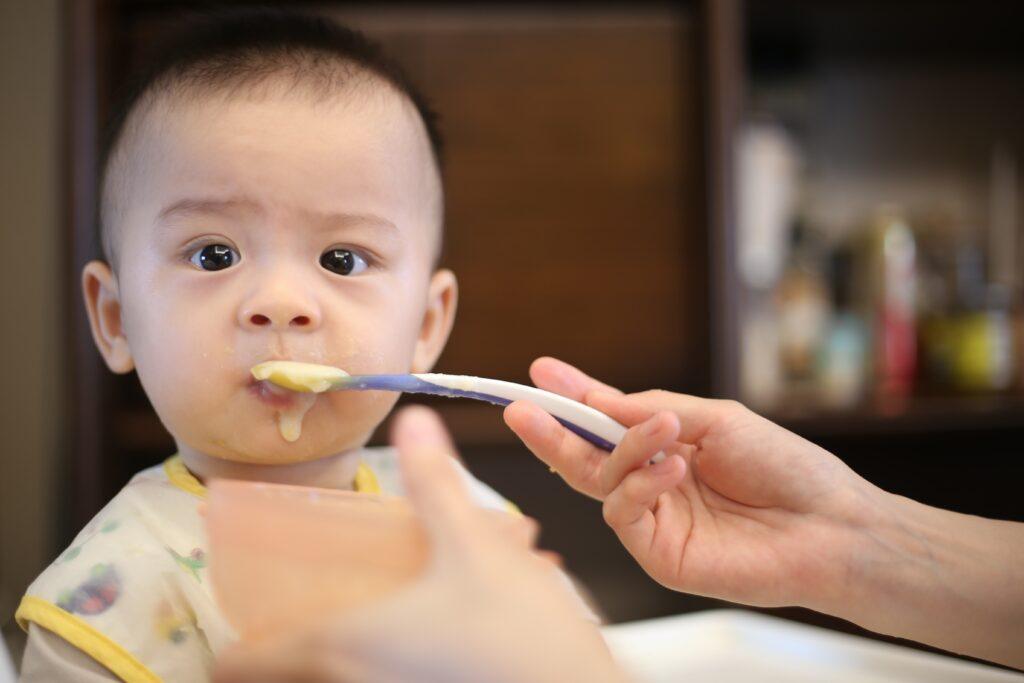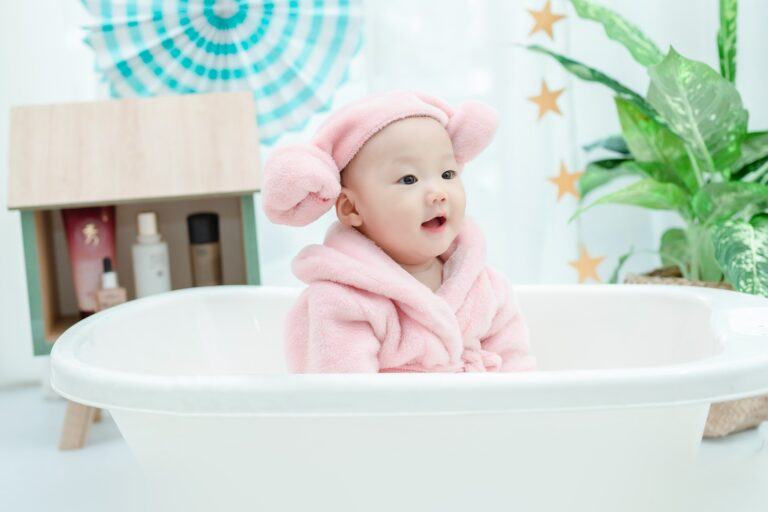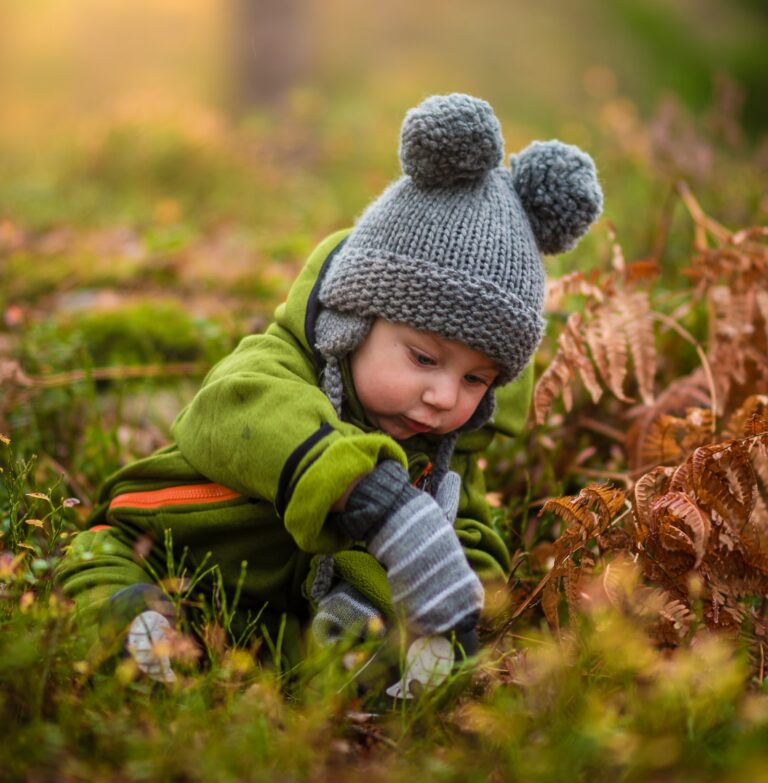No products in the cart.
Baby’s First Year Essentials (Part 1)
by Jessie
Baby’s first-year essentials is a guide to show all of your baby’s needs before his first birthday, covers sleeping, feeding, bathing, and playing. In case you may miss out on anything, in this article, we have you cover all of their daily essentials and needs. This article will be divided into 2 parts – sleeping and feeding (part 1), bathing, and playing (part 2).
Baby’s first year essentials (Part 1):
Sleeping
Babies need a lot of sleep to thrive. We, as parents, will try to provide everything to make our little one fall asleep easily and sleep soundly. A baby who has enough sleep is a happy baby, which also makes us, happy parents too. Here are some essentials to help her get the most comfortable shut-eye.

Swaddle blanket
Newborn babies like to feel secure and snuggled, the way they were in mommy’s womb. Choose a weather appropriate swaddle blanket, snug your baby inside a cozy and soft blanket after bath time before you put him to his bed. Make sure your baby is well fed before bed. Also, a nice sleeping bag which is also great, to keep your baby nice and warm. Dim your light, or keep your room dark and soon he will learn it is time for bed.
Read more “What’s Swaddling?“
Crib and mattress
Newborn babies shall have separated bed with parents and it can be placed close to the parents’ bed or in their own room. Get a sturdy crib that meet safety standards. Look for mattress that are firm and comfortable. A tight fitted sheet that are manufactured for your infants sleep mattress, make sure no loose bedding other than your baby inside the crib. No soft toys, pillow and blanket in the crib, and it shall not placed too close to a window with a blind or curtain.
Let us see what are the safety standards for the current baby cribs and how to use the crib safely. Sometimes, we just need to ask for a conformation certificates when we buy a new crib. If you happen to get a second hand one, read this:
- Traditional drop-side cribs are banned. These type of cribs have numbers of cases leading to baby’s death due to it’s drop-side mechanism deform and causing the drop-side to detach. Baby can roll into this space and become entrapped, leading to suffocation.
- The wood slats shall be no more than 2 3/8 inches apart and they have to be made of strong wood, to prevent breaking. The small gaps shall not allow the baby fit through gap between slats and cause suffocation.
- The cribs shall be sturdy, no crack or splits, the framework must be made smooth without rough and sharp edges. The screws are securely tighten and will not catch baby clothes, pinch him or injure your baby.
- Mattress height is adjustable. When your child grows older, you can adjust the mattress a little bit lower to prevent him from climbing, and falling out of the crib.
- The crib must be painted with non-toxic paint. Rail teething is common amongst babies, so it is better be a non toxic paint.
- Assembling the crib according to the instruction.
Always look for crib that has a sturdy framework, without dropping sides, and they are made of solid wood and reliable mattress support.
Feeding
Babies need to be fed every two hours or every 4 hours when he gets older. No matter if you are breastfeeding him or bottle feeding him, here are the essentials that you need.
Nursing pillow
This pillow will keep your baby at the proper position and height for feeding, so that you will not strain your back and neck when you feed your baby. If you are a C-section mom, feeding your baby with a nursing pillow will protect your abdomen and help wound healing faster. It is also very comfortable pillow for your child to lie on while you play with him.
Baby Bibs
It is a piece of garment worn around the neck on the chest to protect baby clothing from spilled food/drools or food stains. Bibs are must-haves items. If you do not want to change your baby’s clothing frequently due to food /milk stain, spit up or drools, put it on your baby when needed.
- Dribbler bibs – hanky type of material, useful when baby drools a lot especially during his teething periods.
- Feeding bibs – food grade silicone material, useful when your baby start eating solid foods like mesh vegetables & fruit puree. Look for feeding bibs with a pocket which can hold the spill foods, to protect your baby clothing and safe your household efforts.

Feeding bottles and teats
It is better to start introduce bottle with small ounce bottles and gradually increase to 8 oz bottles when baby grows. Use the teats size according to baby’s age, start from slow flow for newborn and gradually increase as baby grows.
Get a vented baby bottle as it allows better airflow so that your baby doesn’t gulp down a lot of air while feeding. It helps to reduce feeding problem such as colic, spit-up, burping and gas.
Some parents may opt for glass baby bottle, afraid that plastic one may contain toxic chemicals which will leach into the milk when heated or by shaking. Glass one maybe non-toxic and can withstand high temperature but it may not be practical for frequent daily use. They are slightly heavier and easy to break when they fall to the ground or when they are hit by hard/sharp objects. Extra caution to be made when washing them with soap water.
Most parents favor plastic ones, they are light, and resistant to breakages. We need to make sure our feeding bottles are not made in PP material (polypropylene) due to microplastics exposure. Plastic ones will deteriorate over a period of time, as they are frequently washed & sterilized. Plastic will breakdown and release microplastics or other harmful chemicals which will leach into the milk.
Look for plastic feeding bottles that are made in polyphenylsulfone (PPSU) and Polyethersulphone (PES) as they are safer plastic materials which can withstand high temperature without causing chemically breakdown. When you see the appearance of the plastic feeding bottles lost its transparency, it indicates that the bottle material has changed its physical properties and it is time to replace to a new one.
Sterilizer
Baby feeding bottles need to be cleaned and sterilized. Babies are very prone to infection, due to their immature immune systems. Therefore, it is important to sterilize all the feeding equipment, with boiling hot water, using an electric steam sterilizer or cleaning tablet/liquid.
If you, do not mind, washing one or two bottles at the same time, using boiling hot water to sterilize is good enough. If you have plenty of feeding bottles for storing your breastmilk, consider a steam sterilizer which will help you save time.
Brush
When washing your feeding bottles, we need to make sure no milk residue remain on the every part of the bottle including the thread where the cap screws on. A nice bottle brush will help you clean it thoroughly.
A highchair
Once your baby start eating solid foods, you may need to put him on a proper chair that hooks onto a counter or a small table. Eating on a high chair will encourage baby learn to eat on his own and independently. Less messy and it can help you manage the child when you are busy cooking or doing other activities.
Baby spoon & sippy cup
While your baby start eating solid food, it is also fun to let him learn how to use a spoon or sippy cup to eat and drink. Choose a baby spoon with rubber tip so that it does not hurt your baby’s gum when feeding. Sippy cups must be made of BPA free material and with a tight fitting lid.
Baby Skin Care
Nov 26, 2021








Leave a comment